
Bogotá: The Heartbeat of Colombia
Discover Bogotá, Colombia's capital city: a high-altitude gem with rich history, vibrant markets, stunning views, and an electric nightlife scene.
Nestled high in the Andes at an altitude of 2,640 meters, Bogotá is a vibrant and dynamic city that offers a blend of rich history, cultural diversity, and modern urban life. As the capital of Colombia, Bogotá is a melting pot of cultures and traditions, making it a fascinating destination for tourists. Stroll through the historic district of La Candelaria, where colonial-era architecture and cobblestone streets tell the story of Bogotá's past. Here, you can visit the Museo del Oro, home to one of the largest collections of pre-Columbian gold artifacts in the world, and the Botero Museum, which showcases the works of Colombia's most famous artist, Fernando Botero. The city's bustling markets, such as Paloquemao, offer a sensory overload of colors, sounds, and flavors. Sample exotic fruits, traditional Colombian dishes, and freshly brewed coffee while mingling with locals. For a panoramic view of the city, take a cable car or funicular up to Monserrate, a mountain that offers breathtaking vistas of Bogotá and its surrounding areas. Bogotá's nightlife is equally captivating, with a plethora of bars, clubs, and live music venues. Zona Rosa and Zona T are popular nightlife districts where you can dance the night away to salsa, reggaeton, and other Latin beats. For a more laid-back evening, explore the city's array of cozy cafes and trendy restaurants in neighborhoods like Chapinero and Usaquén. With its mix of old-world charm and contemporary flair, Bogotá is a city that promises an unforgettable experience for every traveler.
Local tips in Bogotá
- Altitude Adjustment: Bogotá's high altitude can cause altitude sickness. Take it easy for the first few days and stay hydrated.
- Weather Ready: Bogotá's weather can be unpredictable. Pack layers and an umbrella, as it can rain at any time.
- Safety First: Stick to well-known areas and avoid wandering alone at night. Use registered taxis or ride-sharing services.
- Local Currency: Carry some Colombian pesos for small purchases, as not all places accept credit cards.
- Language Basics: Learn a few basic Spanish phrases to help navigate and interact with locals.
- Sunday Ciclovía: On Sundays, major streets are closed to cars for cyclists and pedestrians. Rent a bike and join the locals!
Neighbourhoods in Bogotá
Bogotá: The Heartbeat of Colombia
Nestled high in the Andes at an altitude of 2,640 meters, Bogotá is a vibrant and dynamic city that offers a blend of rich history, cultural diversity, and modern urban life. As the capital of Colombia, Bogotá is a melting pot of cultures and traditions, making it a fascinating destination for tourists. Stroll through the historic district of La Candelaria, where colonial-era architecture and cobblestone streets tell the story of Bogotá's past. Here, you can visit the Museo del Oro, home to one of the largest collections of pre-Columbian gold artifacts in the world, and the Botero Museum, which showcases the works of Colombia's most famous artist, Fernando Botero. The city's bustling markets, such as Paloquemao, offer a sensory overload of colors, sounds, and flavors. Sample exotic fruits, traditional Colombian dishes, and freshly brewed coffee while mingling with locals. For a panoramic view of the city, take a cable car or funicular up to Monserrate, a mountain that offers breathtaking vistas of Bogotá and its surrounding areas. Bogotá's nightlife is equally captivating, with a plethora of bars, clubs, and live music venues. Zona Rosa and Zona T are popular nightlife districts where you can dance the night away to salsa, reggaeton, and other Latin beats. For a more laid-back evening, explore the city's array of cozy cafes and trendy restaurants in neighborhoods like Chapinero and Usaquén. With its mix of old-world charm and contemporary flair, Bogotá is a city that promises an unforgettable experience for every traveler.
When is the best time to go to Bogotá?
Iconic landmarks you can’t miss
Plaza de Bolívar
Discover the historic charm of Plaza de Bolívar, a vibrant cultural hub in Bogotá, surrounded by stunning architecture and rich Colombian heritage.
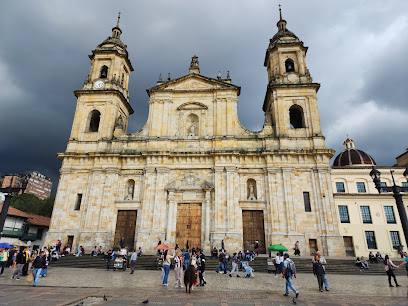
Parque Metropolitano Simón Bolívar
Explore the lush landscapes and vibrant culture of Parque Metropolitano Simón Bolívar, Bogotá's premier urban park perfect for relaxation and recreation.

Jardín Botánico de Bogotá José Celestino Mutis
Explore the lush beauty of the Jardín Botánico de Bogotá, a botanical paradise showcasing Colombia's diverse plant species in a serene urban setting.
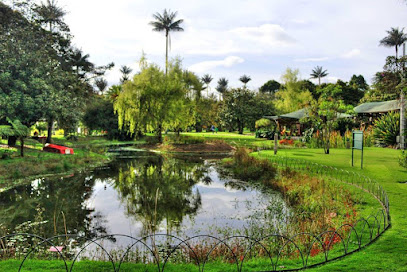
Gold Museum
Explore the Gold Museum in Bogotá, a heritage treasure showcasing Colombia's rich pre-Columbian history and exquisite gold artifacts.

Parque de los Novios
Explore the tranquil beauty of Parque de los Novios in Bogotá, a perfect park for relaxation, family fun, and cultural experiences amidst nature.

Botero Museum
Explore the Botero Museum, a cultural gem in Bogotá showcasing the unique artworks of Fernando Botero and renowned international artists, all for free.

Virrey Park
Discover Virrey Park, a vibrant urban park in Bogotá, perfect for relaxation, cultural experiences, and family-friendly activities amidst lush greenery.
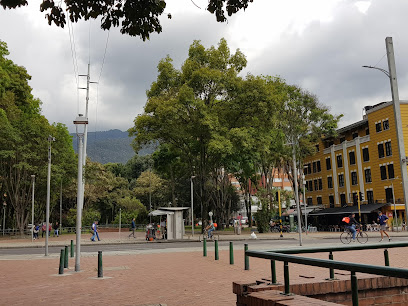
Teatro Nacional La Castellana
Explore the cultural heartbeat of Bogotá at Teatro Nacional La Castellana, where performing arts come alive in a stunning architectural setting.

Tequendama Falls
Explore the breathtaking beauty of Tequendama Falls, a natural wonder in Cundinamarca, Colombia, surrounded by lush landscapes and rich cultural history.

Parque de la Independencia
Discover the lush landscapes, rich history, and vibrant culture of Parque de la Independencia, a serene escape in the heart of Bogotá, Colombia.

Casa Dann Carlton Hotel & Spa
Experience luxury and relaxation at Casa Dann Carlton Hotel & Spa, a premier destination in Bogotá's upscale Chico neighborhood.

Colpatria Tower
Experience breathtaking views from Bogotá's tallest building, Colpatria Tower, where modern architecture meets stunning panoramas of the capital.

Usaquén Flea Market
Experience the charm of Colombia at Usaquén Flea Market, where local crafts, delicious food, and vibrant culture come together in an unforgettable Sunday escape.

Plaza de Toros de Santamaría
Discover the vibrant culture and thrilling events at Plaza de Toros de Santamaría, Bogotá's historic bullring filled with tradition and excitement.

Monument to the Flags
Explore the Monument to the Flags in Bogotá, a stunning tribute to Colombia's cultural heritage and national pride, surrounded by beautiful green spaces.

Unmissable attractions to see
Plaza de Bolívar
Explore the vibrant Plaza de Bolívar, Bogotá's historic heart, surrounded by stunning architecture and rich cultural heritage.

Simón Bolívar Park
Discover the lush beauty and vibrant culture of Simón Bolívar Park, Bogotá's most beloved urban oasis for relaxation and recreation.

Jardín Botánico de Bogotá José Celestino Mutis
Experience the beauty and biodiversity of Colombia at the Jardín Botánico de Bogotá, a must-see destination for nature lovers and tourists alike.

Plazoleta Chorro de Quevedo
Explore the historical heart of Bogotá at Plazoleta Chorro de Quevedo, a vibrant square filled with culture, art, and colonial charm.
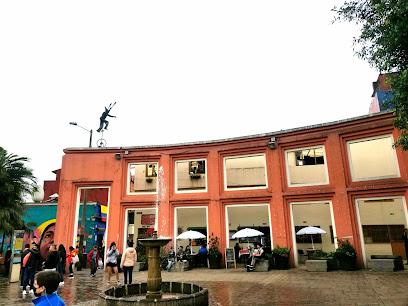
Salitre Mágico
Experience the thrill and magic of Salitre Mágico in Bogotá, a delightful amusement park featuring rides, shows, and delicious Colombian cuisine for all ages.

Gold Museum
Explore Colombia's rich history through the stunning artifacts at Bogotá's Gold Museum, a premier destination for art and culture enthusiasts.

Nemesio Camacho El Campín Stadium
Experience the vibrant atmosphere of Nemesio Camacho El Campín Stadium, a must-visit for sports lovers in Bogotá, Colombia, rich in local culture and history.

Parque de la 93
Experience the vibrant atmosphere and natural beauty of Parque de la 93, an urban oasis in Bogotá, Colombia, perfect for relaxation and cultural events.

Museo Nacional de Colombia
Discover Colombia's rich cultural heritage at Museo Nacional, the largest national museum showcasing art and history in Bogotá.

Monserrate Sanctuary
Explore the breathtaking Monserrate Sanctuary in Bogotá, offering stunning views, rich history, and a serene atmosphere for all visitors.
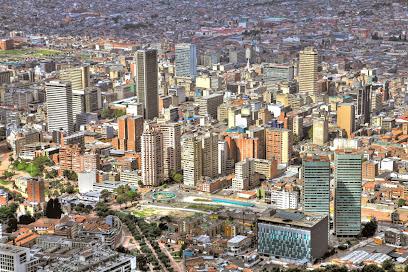
Parque de los Novios
Discover the tranquility of Parque de los Novios, a vibrant park in Bogotá perfect for leisurely strolls, picnics, and cultural experiences.

ParkWay
Explore ParkWay, Bogotá's vibrant urban park, where lush landscapes and artistic culture come together for an unforgettable experience.
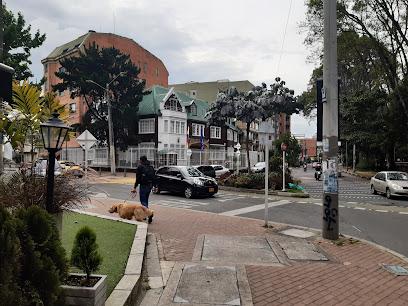
Parque Nacional Enrique Olaya Herrera
Explore the lush landscapes and serene beauty of Parque Nacional Enrique Olaya Herrera, a must-visit urban oasis in the heart of Bogotá, Colombia.
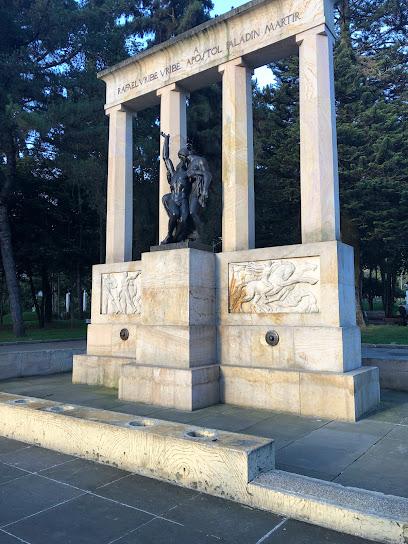
Botero Museum
Explore the Botero Museum in Bogotá – a free cultural gem showcasing the unique art of Fernando Botero and other renowned artists.
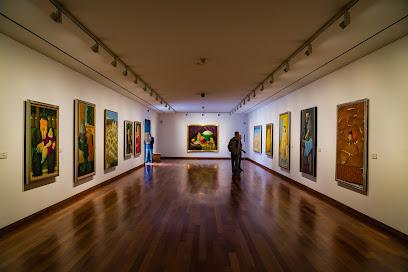
Usaquén Park
Discover Usaquén Park, a peaceful urban retreat in Bogotá, filled with vibrant nature, art, and cultural events that enchant every visitor.

Essential places to dine
Storia D'Amore zona T
Experience authentic Italian cuisine at Storia D'Amore in Bogotá's Chapinero district, where every meal tells a delicious story.

Seratta Gourmand Market 114
Discover the essence of fine dining at Seratta Gourmand Market in Bogotá—where Italian, Mediterranean, and Spanish cuisines come together.

Osaka Bogotá
Experience the exquisite blend of Japanese and Peruvian cuisine at Osaka Bogotá, where culinary artistry meets vibrant atmosphere.

El Gato Gris
Experience the vibrant flavors of Colombia at El Gato Gris in Bogotá's historic La Candelaria district.

Harry Sasson
Experience culinary artistry at Harry Sasson in Bogotá - where tradition meets innovation in fine dining.

La Puerta Falsa Restaurant
Experience authentic Colombian flavors at La Puerta Falsa in Bogotá - where tradition meets taste.

Takuma Cocina Show
Discover the vibrant flavors of Asian fusion at Takuma Cocina Show in Bogotá—where sushi meets spectacular teppanyaki performances.

Tramonti
Experience authentic Italian cuisine at Tramonti in Bogotá's Chapinero district—where tradition meets contemporary flair.

Kathmandu
Experience Kathmandu: A Cultural Gem with Lively Markets, Temples, and Delicious Asian Cuisine Awaiting Your Discovery.

La PUERTA de la CATEDRAL
Experience authentic Colombian cuisine at La Puerta de la Catedral in Bogotá's historic La Candelaria district.

Restaurante El Cielo
Experience the art of Colombian cuisine at Restaurante El Cielo, where tradition meets innovation in every exquisite dish.

La Brasserie
Experience exquisite French cuisine at La Brasserie in Bogotá's chic neighborhood of Chico – where every meal is a celebration.

Restaurante La Herencia
Discover authentic Colombian flavors at Restaurante La Herencia in Bogotá, where tradition meets contemporary dining in a warm atmosphere.

El Chato
Experience exquisite Colombian cuisine at El Chato, where tradition meets innovation in an unforgettable dining experience.

Restaurante Peruano - El Indio de Machu Picchu
Experience authentic Peruvian cuisine at El Indio de Machu Picchu, where vibrant flavors meet warm hospitality in Bogotá's Chapinero district.

Markets, malls and hidden boutiques
Titan Plaza Shopping Mall
Discover the ultimate shopping experience at Titan Plaza Shopping Mall in Bogotá, featuring 500+ stores, delicious dining, and fun entertainment options.

Andino
Discover luxury shopping and local treasures at Andino, Bogotá's premier shopping mall, complete with diverse dining and entertainment options.

Hacienda Santa Barbara Mall
Experience the charm of traditional Colombian culture at Hacienda Santa Barbara Mall, a premier shopping and dining destination in Bogotá.
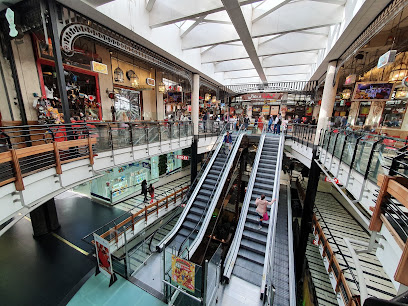
Pasaje Rivas
Explore the vibrant Pasaje Rivas in Bogotá, a cultural marketplace filled with art, handicrafts, and authentic Colombian flavors.

Rustiko | Tienda de Regalos, Diseño, Souvenirs Colombianos. Local BD-05
Explore Rustiko in Bogotá, your go-to destination for authentic Colombian souvenirs and unique gifts that celebrate local craftsmanship.

Emerald by Love
Discover the exquisite beauty of Colombian emeralds at Emerald by Love, a premier jewelry store in the heart of Bogotá's cultural district.

Mall Bogotá
Discover Mall Bogotá, a premier shopping destination blending local culture and modern retail experiences in the heart of Colombia's capital.

Artesanías y Esmeraldas Colombianas Doris Ortiz
Discover the essence of Colombia at Artesanías y Esmeraldas Colombianas Doris Ortiz, where authentic crafts and cultural treasures await every traveler.

St.Dom Bogotá
Explore St.Dom Bogotá, where contemporary Colombian fashion meets unique craftsmanship in a vibrant shopping experience.
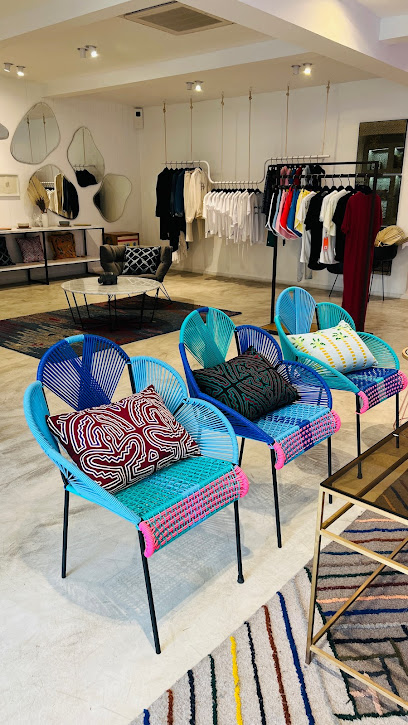
MUZEM Joyería
Explore the exquisite world of Colombian emeralds at MUZEM Joyería, where craftsmanship meets elegance in the heart of Bogotá.

Bogota Dufry Shopping
Discover a world of duty-free shopping at Bogotá Dufry, your ultimate stop for luxury and local products at El Dorado International Airport.

Web Shop Colombia
Explore Web Shop Colombia, the ultimate outlet store in Bogotá, offering trendy fashion and local crafts at unbeatable prices.

Inkanta Bulevar Niza
Explore Inkanta Bulevar Niza, Bogotá's premier gift shop for unique collectibles and fashion accessories that embody Colombian culture.

Artesanías El Jaguar
Discover the authentic spirit of Colombia at Artesanías El Jaguar, a premier souvenir store in Bogotá showcasing unique handcrafted treasures.
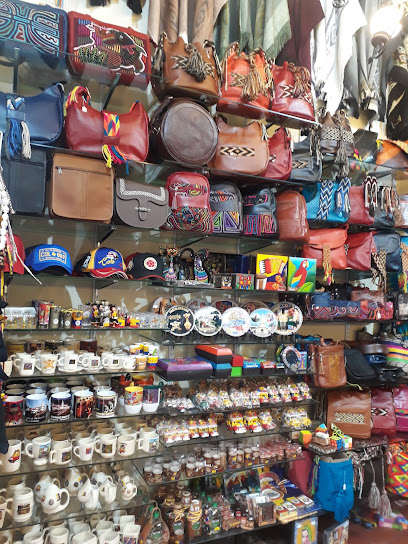
Magasin
Discover Magasin, Bogotá's vibrant dollar store offering a treasure trove of affordable goods and unique souvenirs for every traveler.

Essential bars & hidden hideouts
Zona T
Experience the vibrant nightlife and exquisite dining options in Bogotá's Zona T, where every night promises excitement and indulgence.

Vintrash Bogotá
Experience the vibrant nightlife of Bogotá at Vintrash - a lively bar and disco club offering cocktails and delicious grill options in Chapinero.

El Irish Pub
El Irish Pub in Bogotá offers an authentic Irish experience with delicious food, vibrant atmosphere, and live music in the heart of Chapinero.

Smoking Molly -Blues & Jazz RestoBar
Discover the vibrant atmosphere of Smoking Molly, Bogotá's premier Blues and Jazz RestoBar, featuring live music and delectable cuisine.

Revellion Cultu - Bar
Experience the vibrant culture of Bogotá at Revellion Cultu, where delicious grilled dishes meet lively entertainment in a unique bar setting.

Abbot Rock Bar | Abbott & Costello
Discover the lively atmosphere and delightful drinks at Abbot Rock Bar, a top nightlife destination in Bogotá's Chapinero district.

Huerta Coctelería Artesanal
Discover the vibrant flavors of Bogotá at Huerta Coctelería Artesanal, a cocktail bar blending health-focused cuisine with artisan drinks.

Bar la Negra
Experience the vibrant nightlife at Bar la Negra in Bogotá, where cocktails, music, and a lively atmosphere create unforgettable moments.

Pedro Mandinga Rum Bar Bogota
Discover the vibrant Pedro Mandinga Rum Bar in Bogotá, where artisanal cocktails and lively atmosphere meet the spirit of the Caribbean.

PRAVDA
Discover the vibrant flavors of PRAVDA in Bogotá, where grilling meets mixology in a lively atmosphere.
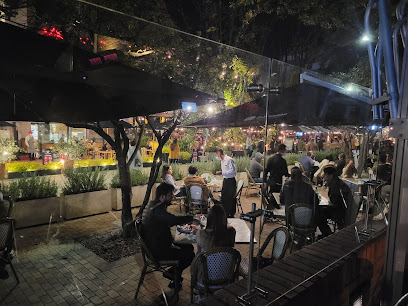
Reyna Bar
Discover Reyna Bar in Chapinero, Bogotá, where gourmet cuisine meets vibrant nightlife in a stylish gastropub setting.
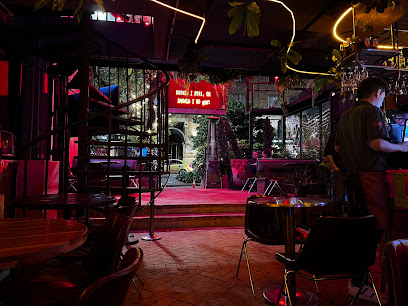
The Doors Rock Bar
Discover Bogotá's electrifying nightlife at The Doors Rock Bar – where live rock music and a vibrant atmosphere come together.

Crazy Shots COFFEE
Discover the vibrant flavors of Bogotá at Crazy Shots COFFEE, a perfect blend of grilled delights and refreshing drinks in a lively setting.

Drunken Fox
Discover the vibrant nightlife at Drunken Fox, a premier bar in Bogotá offering eclectic cocktails and an energetic atmosphere for unforgettable nights.
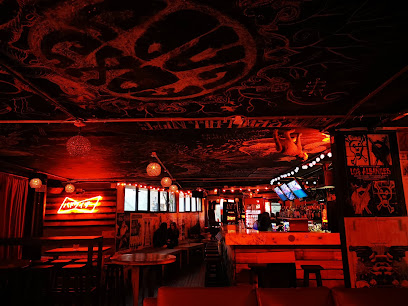
La Catedral Bar Bogotá
Experience the vibrant nightlife at La Catedral Bar in Bogotá, where delicious food, refreshing drinks, and live DJ performances create an unforgettable atmosphere.

Local Phrases
-
- HelloHola
[oh-la] - GoodbyeAdiós
[ah-dee-ohs] - YesSí
[see] - NoNo
[no] - Please/You're welcomePor favor/De nada
[por fah-vor/deh nah-dah] - Thank youGracias
[grah-see-ahs] - Excuse me/SorryDisculpe/Perdón
[dee-skool-peh/pehr-dohn] - How are you?¿Cómo estás?
[ko-moh ehs-tahs] - Fine. And you?Bien. ¿Y tú?
[byen. ee too] - Do you speak English?¿Hablas inglés?
[ah-blahs een-glehs] - I don't understandNo entiendo
[no ehn-tee-ehn-doh]
- HelloHola
-
- I'd like to see the menu, pleaseMe gustaría ver el menú, por favor
[meh goos-tah-ree-ah behr ehl meh-noo, por fah-vor] - I don't eat meatNo como carne
[no koh-moh kahr-neh] - Cheers!¡Salud!
[sah-lood] - I would like to pay, pleaseMe gustaría pagar, por favor
[meh goos-tah-ree-ah pah-gahr, por fah-vor]
- I'd like to see the menu, pleaseMe gustaría ver el menú, por favor
-
- Help!¡Ayuda!
[ah-yoo-dah] - Go away!¡Vete!
[veh-teh] - Call the Police!¡Llama a la policía!
[yah-mah ah lah poh-lee-see-ah] - Call a doctor!¡Llama a un médico!
[yah-mah ah oon meh-dee-koh] - I'm lostEstoy perdido
[ehs-toy pehr-dee-doh] - I'm illEstoy enfermo
[ehs-toy ehn-fehr-moh]
- Help!¡Ayuda!
-
- I'd like to buy...Me gustaría comprar...
[meh goos-tah-ree-ah kohm-prahr] - I'm just lookingSolo estoy mirando
[soh-loh ehs-toy mee-rahn-doh] - How much is it?¿Cuánto cuesta?
[kwan-toh kwehs-tah] - That's too expensiveEso es muy caro
[eh-soh ehs moo-ee kah-roh] - Can you lower the price?¿Puedes bajar el precio?
[pweh-dehs bah-har ehl pree-syoh]
- I'd like to buy...Me gustaría comprar...
-
- What time is it?¿Qué hora es?
[keh oh-rah ehs] - It's one o'clockEs la una
[ehs lah oo-nah] - Half past (10)Las diez y media
[lahs dee-ehs ee meh-dee-ah] - MorningMañana
[mah-nyah-nah] - AfternoonTarde
[tahr-deh] - EveningNoche
[noh-cheh] - YesterdayAyer
[ah-yehr] - TodayHoy
[oy] - TomorrowMañana
[mah-nyah-nah] - 1Uno
[oo-noh] - 2Dos
[dohs] - 3Tres
[trehs] - 4Cuatro
[kwah-troh] - 5Cinco
[seen-koh] - 6Seis
[sace] - 7Siete
[see-eh-teh] - 8Ocho
[oh-choh] - 9Nueve
[nweh-veh] - 10Diez
[dee-ehs]
- What time is it?¿Qué hora es?
-
- Where's a/the...?¿Dónde está un/el...?
[dohn-deh ehs-tah oon/ehl] - What's the address?¿Cuál es la dirección?
[kwal ehs lah dee-rehk-syohn] - Can you show me (on the map)?¿Puedes mostrarme (en el mapa)?
[pweh-dehs mohs-trar-meh (ehn ehl mah-pah)] - When's the next (bus)?¿Cuándo es el próximo (bus)?
[kwan-doh ehs ehl proh-ksih-moh (boos)] - A ticket (to ....)Un boleto (para ....)
[oon boh-leh-toh (pah-rah)]
- Where's a/the...?¿Dónde está un/el...?
History of Bogotá
-
Bogotá, originally called Bacatá by the indigenous Muisca people, was founded on August 6, 1538, by the Spanish conquistador Gonzalo Jiménez de Quesada. The city was established on the site of the indigenous settlement, and it quickly became an important administrative center for the Spanish colonial government.
-
During the colonial period, Bogotá grew significantly as the capital of the New Kingdom of Granada. It became a hub for political, economic, and cultural activities. The city’s architecture from this period includes notable examples of Spanish colonial style, such as the San Francisco Church and the Cathedral Primada.
-
Bogotá played a crucial role in the movement for independence from Spanish rule. On July 20, 1810, a revolt against Spanish authorities began in the city, leading to the eventual independence of Colombia. This date is now celebrated as Colombia’s Independence Day, and the event is commemorated at the Casa del Florero, where the revolt started.
-
In the 19th century, Bogotá continued to grow and modernize. The city saw the establishment of important institutions such as the National University of Colombia in 1867 and the National Library in 1777. Additionally, the construction of new infrastructure, including railways and telegraph lines, helped to connect Bogotá with other regions of the country.
-
The period known as 'La Violencia' (The Violence) from the late 1940s to the late 1950s was marked by intense civil conflict in Colombia. Bogotá experienced significant unrest during this time, including the assassination of popular political leader Jorge Eliécer Gaitán in 1948. His death triggered violent riots known as the Bogotazo, which caused widespread destruction in the city.
-
In the latter half of the 20th century, Bogotá underwent significant modernization. The city expanded rapidly, with the development of new neighborhoods and commercial areas. Important projects included the construction of the El Dorado International Airport and the TransMilenio bus rapid transit system, which has become a model for urban transportation.
-
Bogotá has experienced a cultural renaissance in recent years. The city is home to numerous museums, such as the Gold Museum, which houses an extensive collection of pre-Columbian gold artifacts, and the Botero Museum, which showcases works by the famous Colombian artist Fernando Botero. Bogotá’s vibrant cultural scene also includes theaters, galleries, and music festivals.
-
In 2012, Bogotá was designated a UNESCO City of Music, recognizing its rich musical heritage and vibrant contemporary music scene. The city hosts a variety of music festivals, including Rock al Parque, one of the largest free rock festivals in Latin America, and the Ibero-American Theater Festival, which is one of the most significant cultural events in the region.
Bogotá Essentials
-
Bogotá is served by El Dorado International Airport (BOG), which is approximately 15 kilometers from the city center. The airport is a major hub for international and domestic flights. From the airport, you can use licensed taxis, ride-sharing services, or airport shuttles to reach your accommodation. Direct flights to Bogotá are available from major cities in North America, Europe, and other parts of Latin America.
-
Bogotá has an extensive public transportation system, including the TransMilenio bus rapid transit system, regular buses, and a growing network of bicycle lanes. Taxis and ride-sharing services such as Uber and Cabify are widely available. For short distances, walking is often a good option, especially in well-known areas like La Candelaria and Chapinero. Renting a car is possible but not recommended due to heavy traffic and limited parking.
-
The official currency in Colombia is the Colombian Peso (COP). Credit and debit cards are widely accepted in most hotels, restaurants, and shops. However, it is advisable to carry some cash for smaller establishments and street vendors. ATMs are widely available throughout the city, but always use machines in well-lit, busy areas for safety.
-
While Bogotá has made significant strides in improving safety, certain areas still have higher crime rates, particularly for crimes targeting tourists. Avoid neighborhoods such as El Bronx, certain parts of Ciudad Bolívar, and San Cristóbal. Stick to well-known tourist areas like La Candelaria, Chapinero, and Zona T. Always be cautious of your belongings, especially in crowded places.
-
In case of an emergency, dial 123 for immediate assistance, which connects you to police, medical, and fire services. Major hospitals in Bogotá include Fundación Santa Fe and Clínica del Country, both of which offer high-quality medical care. It is advisable to have travel insurance that covers medical emergencies. Pharmacies are readily available for minor health issues and over-the-counter medications.
-
Fashion: Do dress in layers, as Bogotá's weather can change quickly. Avoid flashy clothing and accessories that attract attention. Religion: Do respect local customs and traditions, especially when visiting religious sites. Public Transport: Do use the TransMilenio system but be mindful of your belongings. Avoid public transport late at night. Greetings: Do greet people with a handshake and say 'Buenos días' (Good morning) or 'Buenas tardes' (Good afternoon). Eating & Drinking: Do try local delicacies and accept food offerings graciously. Don't drink tap water; always opt for bottled water.
-
To experience Bogotá like a local, visit the Paloquemao Market for fresh produce and local cuisine. Explore the Usaquén flea market on Sundays for unique crafts and antiques. Use the Ciclovía, where major roads are closed to cars every Sunday and public holiday for cyclists and pedestrians. Engage with locals, as they are generally friendly and willing to share insights about the city and its culture.
Trending Landmark in Bogotá
-
Plaza de Bolívar
-
Parque Metropolitano Simón Bolívar
-
Jardín Botánico de Bogotá José Celestino Mutis
-
Gold Museum
-
Parque de los Novios
-
Botero Museum
-
Virrey Park
-
Teatro Nacional La Castellana
-
Tequendama Falls
-
Parque de la Independencia
-
Casa Dann Carlton Hotel & Spa
-
Colpatria Tower
-
Usaquén Flea Market
-
Plaza de Toros de Santamaría
-
Monument to the Flags
Nearby Cities to Bogotá
-
Things To Do in Villavicencio
-
Things To Do in Tunja
-
Things To Do in Ibagué
-
Things To Do in Manizales
-
Things To Do in Armenia
-
Things To Do in Pereira
-
Things To Do in Medellín
-
Things To Do in Neiva
-
Things To Do in Cali
-
Things To Do in Popayán
-
Things To Do in Cúcuta
-
Things To Do in Pasto
-
Things To Do in Sincelejo
-
Things To Do in Cartagena
-
Things To Do in Ibarra



















